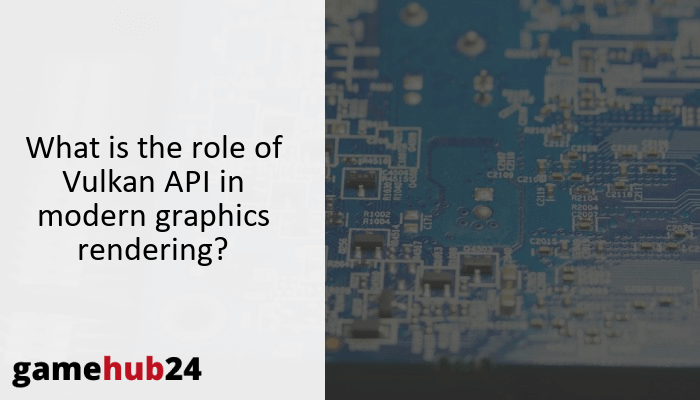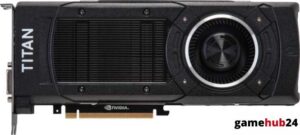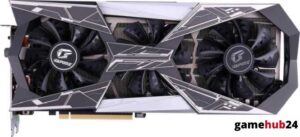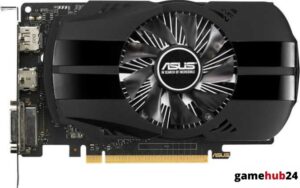Pioneering graphics interface Vulkan API was designed by the esteemed Khronos Group. This essay will walk you through its history, salient features, and revolutionary impact on the computer graphics and gaming industries.
Discover the history of the Khronos Group’s Vulkan API, a product created to address the growing need for a high-performance, low-overhead graphics interface. Find out how the Vulkan API has transformed the computer graphics and gaming industries with its unique characteristics, such as cross-platform interoperability, low-level hardware access, and multi-threading capacity. Find out how it affects the future of computer graphics, how it integrates with game engines like Unity and Unreal Engine, and how it functions in GPU architecture.
- Understand the origins of Vulkan API and the role of the Khronos Group in its development.
- Discover the key features of Vulkan API that set it apart from other graphics interfaces.
- Explore how Vulkan API improves video game development and its integration with game engines like Unity and Unreal Engine.
- Learn about the role of Vulkan API in GPU architecture and its utilization by industry giants like AMD, Nvidia, and Intel.
- Uncover how Vulkan API is shaping the future of computer graphics, its role in Google Stadia, and its influence on Microsoft and Sony graphics.
What are the origins of Vulkan API?
Vulkan API is a Khronos Group product that emerged from the furnace of advanced graphics interface development and was designed to transform computer graphics. It was created in response to the growing need for a high-performance, low-overhead interface capable of effectively utilizing the capabilities of contemporary GPU architecture. With the goal of building a more stable and adaptable graphics ecosystem, developers, industry leaders, and hardware makers worked together to design the API. An API that was produced as a result of this concentrated effort is now essential in the field of computer graphics and gaming.
Who is the Khronos Group and what is their role in Vulkan API development?
The open consortium of prominent firms in the industry, the Khronos Group, is the main force behind Vulkan API development. Tech giants AMD, Intel, and Nvidia are part of this consortium that is dedicated to developing open standard APIs to advance the graphics industry. The Khronos Group played a crucial role in the development of the Vulkan API by offering a forum for cooperation and creativity. Because of their leadership, the API was created with a view on future visual needs, making Vulkan a flexible tool for developers.
How does Vulkan API relate to OpenGL and DirectX?
DirectX, OpenGL, and Vulkan API are all essential parts of the graphics interface environment. Nonetheless, Vulkan was created to overcome the shortcomings of its forerunners. Developers can control the GPU more directly with Vulkan than with OpenGL, a high-level API with a lot of driver overhead, which leads to better performance and efficiency. Vulkan differs from DirectX in that it is cross-platform compatible, something that DirectX is not. Consequently, Vulkan API is a revolutionary force in the graphics interface space rather than just an OpenGL or DirectX substitute.
Were you aware? Unlike several other graphics interfaces, Vulkan API is not dependent on any particular operating system. It’s made to function on many different operating systems, such as Windows, Linux, and Android. Developers can save time and resources by writing code only once and having it run on numerous platforms thanks to cross-platform compatibility.
What are the key features of Vulkan API?
The unique qualities that distinguish Vulkan API from other graphics interfaces have made it well-known. By providing low-level hardware access, it lowers driver overhead and helps developers get the most out of the GPU. Because of its multi-threading ability, multi-core CPUs may be used more effectively, which is essential for contemporary graphics and gaming applications. Furthermore, runtime efficiency is enhanced and load times are decreased by Vulkan’s support for precompiled shaders using SPIR-V. Finally, because of its cross-platform portability, developers that work with several operating systems can find it to be a useful tool.
How does Vulkan API improve video game development?
Video game creation has greatly improved thanks to Vulkan API, which gives developers greater direct control over hardware resources. Games may run at greater frame rates because to its effective multi-threading capabilities and low driver overhead, making for a more fluid and engaging gaming experience. Additionally, load times are lowered by the API’s support for precompiled shaders, improving game speed overall. With Vulkan, game creators can push the limits of what’s conceivable and produce more aesthetically pleasing and responsive games than they have in the past.
What is the role of SPIR-V in Vulkan API?
Vulkan API heavily relies on SPIR-V, a binary intermediate language for shaders. It enables programmers to create shaders in a high-level language that are subsequently turned into bytecode for SPIR-V. The Vulkan driver processes this bytecode during runtime, which lessens the workload for the driver and enhances performance in general. Additionally, SPIR-V is a vital tool for developers using the Vulkan API due to its support for compute shaders and parallel processing.
How does Vulkan API support cross-platform software?
The cross-platform compatibility of the Vulkan API is one of its best qualities. Vulkan is intended to function on a variety of operating systems, such as Windows, Linux, and Android, in contrast to certain graphics interfaces that are restricted to particular operating systems. This saves time and resources for developers because they may write code only once and have it execute on several platforms. Moreover, Vulkan’s compatibility with MoltenVK enables it to operate on iOS and macOS, so increasing its scope. Because it supports multiple platforms, Vulkan is a useful and adaptable tool for developers.
Developers that want to use the GPU’s full potential for tasks other than graphics processing should think about utilizing the Vulkan API. Because of its low-level hardware access, it can use hardware resources more effectively and create new opportunities for parallel processing. In addition, Vulkan allows you to build code that can run on a GPU through its support of compute shaders via SPIR-V.
How does Vulkan API compare to other graphics libraries?
The special characteristics and capabilities of Vulkan API are even more obvious when compared to conventional graphics libraries. Vulkan is an API that is compatible with a broad variety of GPUs, unlike Mantle API, which is limited to AMD hardware. Vulkan has a wider audience due to its cross-platform interoperability than Metal API, which is exclusive to the Apple ecosystem. Moreover, Vulkan is an even more potent and versatile tool for developers because to its low-level hardware access and effective multi-threading capabilities.
What are the differences between Vulkan API and Mantle API?
Although low-level hardware access was the goal of both the Vulkan API and the Mantle API, there are important distinctions between the two. AMD created Mantle, a hardware-specific program meant to be used only with AMD GPUs. Conversely, Vulkan is an API that is independent of hardware and is made to function with a variety of GPUs from various manufacturers. Because of this, Vulkan becomes a more flexible tool for developers, enabling them to create code that functions on a wider variety of hardware.
How does Vulkan API stand against Metal API?
Vulkan API distinguishes itself from Metal API because to its open-source and cross-platform interoperability. Vulkan is meant to function across a variety of operating systems, such as Windows, Linux, and Android, whereas Metal is limited to the ecosystem of Apple. Additionally, because Vulkan is open-source, developers can contribute to its advancement and development, fostering greater transparency and teamwork. Because of its openness and cross-platform compatibility, Vulkan is a more useful and approachable tool for developers.
How is Vulkan API utilized in GPU architecture?
The low-level hardware access and effective multi-threading features of the Vulkan API make it a powerful tool for GPU architecture. Vulkan enables more effective use of hardware resources by giving developers more direct control over the GPU, which boosts performance and efficiency. Furthermore, runtime efficiency is enhanced and load times are decreased by Vulkan’s support for precompiled shaders using SPIR-V. Vulkan is an effective tool for developers that work with GPU architecture because of these qualities.
What is the role of Vulkan API in GPGPU?
Vulkan API is essential in the field of General-Purpose computing on Graphics Processing Units (GPGPU). Because of its low-level hardware access, developers can use the GPU’s full capacity for computations other than visuals, creating new opportunities for parallel processing. GPGPU’s capabilities are further enhanced by developers being able to write code that can run on the GPU thanks to Vulkan’s support for compute shaders via SPIR-V. Because of this, Vulkan is an effective and multipurpose GPGPU tool.
How do AMD, Nvidia and Intel use Vulkan API?
Three of the largest names in the GPU market, AMD, Nvidia, and Intel, all use Vulkan API in their products. AMD, the company that first created the Mantle API, the basis for Vulkan, is still supporting Vulkan in its GPUs and using its low-level hardware access to provide better performance. Known for its potent GPUs, Nvidia also supports Vulkan, making use of its effective multi-threading capabilities to provide games that run more smoothly and responsively. Leading integrated graphics company Intel uses Vulkan to boost GPU performance, giving programmers a strong tool for making visually appealing apps.
What is the impact of Vulkan API on game engines?
The Vulkan API has had a significant influence on game engines. Game engines can now produce more visually appealing and responsive experiences thanks to Vulkan, which gives developers greater direct control over hardware resources. Performance has increased due to its low driver overhead and effective multi-threading capabilities, and load times have decreased due to its support for precompiled shaders. Vulkan has been integrated into game engines such as Unity and Unreal Engine, which use its special capabilities to push the limits of what is possible in gaming.
How does Vulkan API integrate with Unity game engine?
One of the most well-known game engines, Unity, has improved its capabilities and performance by integrating the Vulkan API. With Vulkan’s low-level hardware access and effective multi-threading, Unity is able to create games that are more visually striking and responsive. Moreover, load times are lowered by Vulkan’s support for precompiled shaders through SPIR-V, which improves the overall performance of Unity-developed games. Because of this connection, Unity is now a more potent tool for game creators, allowing them to produce more graphically attractive and immersive games.

What is the role of Vulkan API in Unreal Engine?
Leading game engine Unreal Engine has adopted Vulkan API to expand its functionality. Because of Vulkan’s low-level hardware access and effective multi-threading capabilities, Unreal Engine can produce games that are more responsive and visually appealing. Moreover, load times are lowered by Vulkan’s support for precompiled shaders through SPIR-V, which improves the overall performance of Unreal Engine games. Because of this connection, Unreal Engine is now a more potent tool for game creators, allowing them to produce more graphically spectacular and immersive games.
How is Vulkan API shaping the future of computer graphics?
The Vulkan API will play a leading role in influencing computer graphics in the future. Its support for precompiled shaders, efficient multi-threading, and low-level hardware access are opening the door for more aesthetically pleasing and responsive graphics applications. Moreover, the open-source and cross-platform compatibility of Vulkan are promoting a more inclusive and cooperative graphics environment. We should anticipate seeing even more cutting-edge and aesthetically spectacular graphics applications in the future as more developers use Vulkan.
What is the role of Vulkan API in Google Stadia?
Vulkan API is used by Google Stadia, the company’s cloud gaming service, to produce excellent gaming experiences. Stadia can operate games at high frame rates, offering a fluid and engaging gaming experience, thanks to Vulkan’s low-level hardware access and effective multi-threading capabilities. Moreover, load times are lowered by Vulkan’s support for precompiled shaders using SPIR-V, improving the overall speed of Stadia games. Because of this, Vulkan is an essential part of Google Stadia’s technology stack, allowing it to provide gamers everywhere with top-notch gaming experiences.
How is Vulkan API influencing the future of Microsoft and Sony graphics?
The developments in Vulkan API have an impact on both Microsoft and Sony, two significant participants in the gaming sector. Although Microsoft has its own graphics API called DirectX, Vulkan’s advancements—most notably its low-level hardware access and effective multi-threading capabilities—will probably have an impact on DirectX’s future growth. Conversely, Sony has expressed interest in Vulkan due to its promise to produce more responsive and graphically appealing games for its PlayStation platform. As a result, Vulkan API is expected to have a big influence on visuals in the ecosystems of Sony and Microsoft.

















